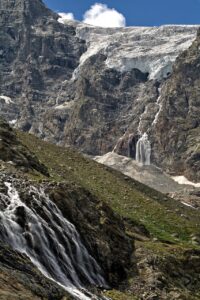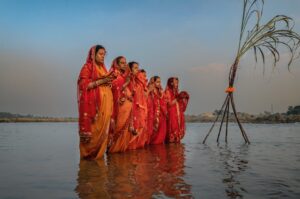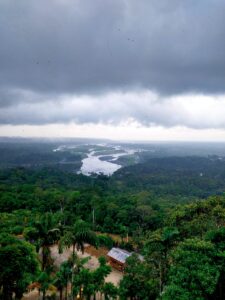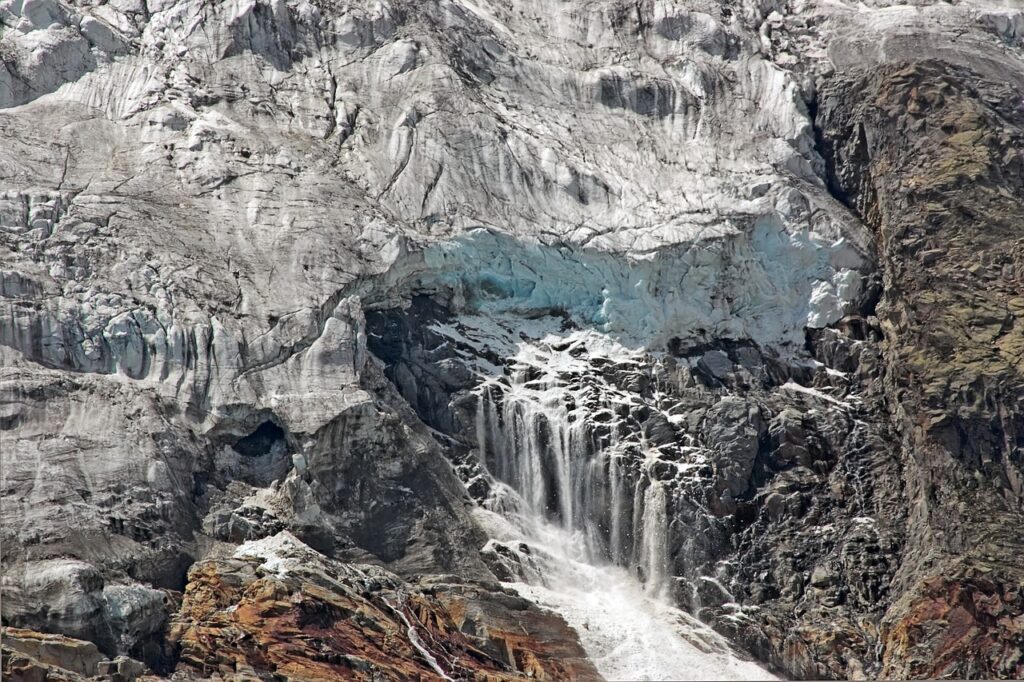How was the concept of The Sacred Headwaters birthed?
It was a good old download during a 3am wakeup that felt so true, I changed my email address, website and social media handles right then and there. So what came through? Visions of the internal reservoir space and what it really represents. When I teach people to go to their internal reservoir to fill up their cup when they are drained, overwhelmed, or upset, what am I really trying to show them? When I sat with that inquiry, what came up for me was that the inner reservoir (what my lineage of teaching calls the Hara space–Japanese for “low belly”) is actually just the starting point we must access in order to nurture the entire rest of  the inner ecosystem. The Hara serves as the inner headwaters, the space in which everything must flow from if we want fresh flows of prana or chi to nourish the inner landscape. Our own inner ecosystem needs these headwaters to stay pristine and fresh so the rest of the body can have access to this vital life-force. If we were to have cloudy or polluted headwaters, what would that mean for the rest of the inner ecosystem?
the inner ecosystem. The Hara serves as the inner headwaters, the space in which everything must flow from if we want fresh flows of prana or chi to nourish the inner landscape. Our own inner ecosystem needs these headwaters to stay pristine and fresh so the rest of the body can have access to this vital life-force. If we were to have cloudy or polluted headwaters, what would that mean for the rest of the inner ecosystem?
This idea was adopted really from The Sacred Headwaters of the outer world. So I’ve begun to tell the story in two parts: The Sacred Headwaters Within and The Sacred Headwaters Without. Let me elaborate.
THE SACRED HEADWATERS WITHOUT:
The name was planted in my brain some years ago through a book written by one of my biggest heroes, Wade Davis. Wade Davis is an ethnobotanist and anthropologist who wrote a book designed to bring attention to a very serious ecological issue Canada was facing, titled “The Sacred Headwaters”. The book was a series of photographs meant to capture the robust beauty and pristine nature of the Stikine River Valley in northwestern British Colombia, a region the indigenous refer to as Klabona, or The Sacred Headwaters. The Tahltan people of the region have always had an understanding that this region is a deeply significant area to protect. Not only was it still proper wilderness within the lower Canadian regions, it also serves as the headwaters for three of Canada’s, and arguably North America’s, most important salmon rivers: the Stikine, the Skeena and the Nass. Salmon are considered keystone species in their environments, meaning their role is vital for the health and function of their ecosystems. Not only are salmon a great food source for many species, they enrich their habitats by cycling nutrients from the ocean to freshwater rivers. However, protecting our freshwater resources is essential for many reasons, with the obvious being that all life springs from it. Living organisms cannot last very long without freshwater to nourish their bodies. But in addition to water being the building block of all life, it also plays a key role in maintaining the planet’s weather patterns and temperature.
Water is literally life. So why would Canada open up the Stikine River Valley to development if it feeds such vital water resources for British Columbia? Financial incentives, of course. The government flirted with the idea of opening up this sacred and pristine valley to resource extraction and mining. “The Sacred Headwaters” by Wade Davis and his colleagues aimed to bring awareness to this major environmental issue. For now, the Stikine River Valley remains protected, however, there are some mining operations just outside its borders that still affect the area and the Tahltan people are still fighting to keep this area protected on a regular basis.
But Canada is not the only place in the world with such a magical geographical phenomena such as the Stikine River Valley. Mt. Kailash in Tibet serves as another geographical location where one source feeds three vital rivers that serves many ecosystems and communities down river. Mt. Kailash feeds the Indian  subcontinent’s most famous rivers: The Indus, Brahmaputra, and tributaries of the Ganges River. Not only do these rivers feed billions of people and living organisms, they are significant aspects of the region’s cultures, as well as economic livelihoods. Additionally, these rivers serve as spiritual connections for the billions of people that gather around them. For example, in India, it is common to ask the river to hold one’s grief after the loss of a loved one. This even looks like putting the ashes of the deceased into the river to be taken out to sea, a common ritual in the city of Varanasi. When we REALLY understand the significance of these rivers, it’s beyond the literal water–it affects the sociological, cultural, economic and spiritual planes of existence for those it nourishes.
subcontinent’s most famous rivers: The Indus, Brahmaputra, and tributaries of the Ganges River. Not only do these rivers feed billions of people and living organisms, they are significant aspects of the region’s cultures, as well as economic livelihoods. Additionally, these rivers serve as spiritual connections for the billions of people that gather around them. For example, in India, it is common to ask the river to hold one’s grief after the loss of a loved one. This even looks like putting the ashes of the deceased into the river to be taken out to sea, a common ritual in the city of Varanasi. When we REALLY understand the significance of these rivers, it’s beyond the literal water–it affects the sociological, cultural, economic and spiritual planes of existence for those it nourishes.
Another region I like to bring attention to surrounding sacred headwaters is the three rivers that have been identified as the primary sources to the Amazon River Basin: the Marañón, Mantaro and Apurímac Rivers of the Peruvian Andes. The Amazon rainforest has long been described as the lungs of the earth and the  Amazon River serves as the heart of the earth.
Amazon River serves as the heart of the earth.
“That enormous amount of evaporated water is what forms the colossal currents of atmospheric humidity that make it rain all over the planet. The Amazon literally pumps rain so that it reaches everyone. That’s why the Amazon jungle not only does the function of the lungs of the planet. It is also its heart, pumping the water, Gaia’s blood, to all the rest of the planetary organism of which we are a part… and we are destroying it.” -Amazon Sacred Headwaters Initiative
It is essential to protect these vital resources. So the Sacred Headwaters Without is dedicated to conservation and to education and awareness around these sacred headwater spaces and the protection of our freshwater resources.
THE SACRED HEADWATERS WITHIN:
So let’s understand what I mean by the Sacred Headwaters Within.
When I think of headwaters, I think of the most pristine water on the planet. It’s water that has just melted from snow or a glacier and been freed into accessible life force energy to feed the entire ecosystem downstream. In its essence, it is untouched, crystal clear, water directly from Source. Energetically, it is totally clean. As that water begins to move from its source downstream, it nourishes all the ecosystems it passes by, cleansing and bringing fresh life force energy as it moves. It breeds humanity, both literally and metaphorically as it moves from one town to another. Every ecosystem and town it passes through, it gathers up the energy from those spaces and brings it along on its journey out to sea. And when I think of salinity, I often think of cleaning a wound out with saltwater or swooshing saltwater in my mouth to heal a canker sore. The saltwater kills the bacteria. So energetically, a river carrying the grief, pollutants and silt it picked up along the way, finds its way to the saltwater to be healed.
What if we used this understanding and looked inside? We could find that just as the Sacred Headwaters nourish every ecosystem in the outer world, our inner Sacred Headwaters can nourish our inner world. If we start at the Sacred Headwaters within which are directly connected to Source (God, Creator, the Universe, etc.), we then can nourish our own inner landscape, bringing pristine life force to all the parts of us that need it for their livelihoods. If we were to start at our most sacred source, which I refer to as the Hara space, we can take the flow of that energy from the Hara and bring it through the energetic body and nourish the other wisdom regions of the body: the head and the heart. The three wisdom regions are energetically connected, so what if we could feed the inner ecosystems of the  head and the heart from the headwaters of the Hara space? Bringing the flow of pristine life force from the Hara out to the rest of the body. From my experience, when we can do this, we can really heal the parts of us that reside in the rest of the body and mind. And just like the Ganges River by the time it empties out, it has taken with it so much energetically along the way. It is polluted; no longer pristine and safe. Similarly, we wouldn’t want to consult our inner ecosystem from a place of pollution. We would want to be able to nourish our inner ecosystem from headwaters, not water that is riddled with pollutants and muck. Which in this context, could really equal the headspace. If we were to try to nourish the inner world from the mouth of our inner river rather than the headwaters, (i.e. we are trying to heal our inner world from the head where the water empties out rather than the Hara where it is connected to Source and the headwaters), then we are trying to swim up river–going against the current (metaphorically, going against our intuition) and we are bringing pollutants and silt into the rest of the inner ecosystem, rather than bringing fresh, clean water.
head and the heart from the headwaters of the Hara space? Bringing the flow of pristine life force from the Hara out to the rest of the body. From my experience, when we can do this, we can really heal the parts of us that reside in the rest of the body and mind. And just like the Ganges River by the time it empties out, it has taken with it so much energetically along the way. It is polluted; no longer pristine and safe. Similarly, we wouldn’t want to consult our inner ecosystem from a place of pollution. We would want to be able to nourish our inner ecosystem from headwaters, not water that is riddled with pollutants and muck. Which in this context, could really equal the headspace. If we were to try to nourish the inner world from the mouth of our inner river rather than the headwaters, (i.e. we are trying to heal our inner world from the head where the water empties out rather than the Hara where it is connected to Source and the headwaters), then we are trying to swim up river–going against the current (metaphorically, going against our intuition) and we are bringing pollutants and silt into the rest of the inner ecosystem, rather than bringing fresh, clean water.
So with that, we must nourish and take care of the inner Sacred Headwaters. We must find a way to use this resource to bring fresh water to the rest of the inner world. How do we do that? We come back to Self, who resides in the Sacred Headwaters of the Hara space. Self is the part of us directly connected to Source, whose cup is always full, and who we can always come back to when we are feeling drained or thirsty. Self resides in the inner reservoir, the headwaters fed directly from Source. When we go there, we can always be replenished.
Follow me on a journey back to the Sacred Headwaters within. The offerings and practices I have discovered in my life have brought me back to Self, where I can connect to my power and authenticity. I’m on a mission to share these discoveries with the world, helping those around me come back to their own Sacred Headwaters. I’m on a mission to help you nourish your own inner ecosystem.

